As the auto transport landscape evolves, flatbed vehicle shipping stands out as a versatile solution for those challenging oversized loads. Whether you’re a business needing to move heavy machinery or an individual with a uniquely shaped vehicle, understanding flatbed shipping is crucial.
At TruckSpot Logistics, we don’t just talk about transport; we facilitate informed decisions by comparing quotes from the industry’s best, ensuring value for your time and money. This article sheds light on the specific use cases, advantages, and practical considerations of flatbed shipping, providing you with the knowledge to choose confidently.
Introduction to Flatbed Vehicle Shipping
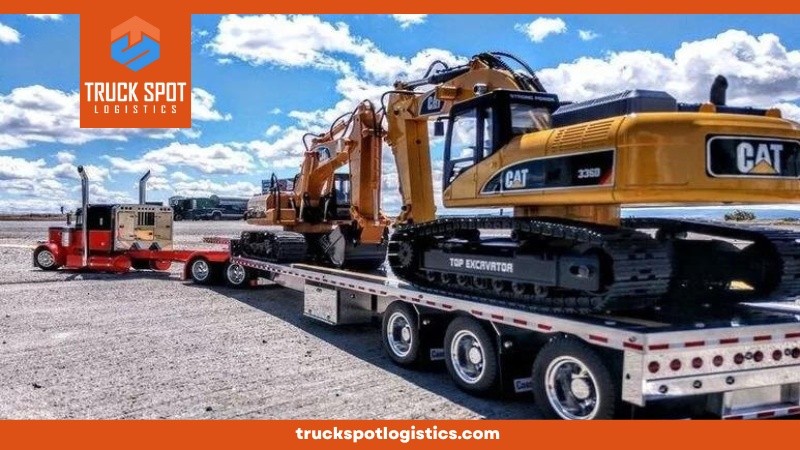
When it comes to moving vehicles that don’t quite fit the mold, flatbed vehicle shipping is the unsung hero of the auto transport world. It’s not just any shipping option—it’s a versatile player capable of handling the big, the bulky, and the oddly shaped. Think of it as the open-range cousin to the enclosed transport method, offering freedom and flexibility for those loads that demand a little extra breathing room.
What is Flatbed Shipping?
Flatbed auto transport is exactly what it sounds like: vehicles are loaded onto a large, open trailer with no sides or roof. This type of trailer offers the space and durability needed for hauling anything that’s too large or heavy for traditional enclosed trailers.
Key Features of Flatbed Shipping Trailers
Using flatbed shipping trailers can seem daunting at first glance, especially if you’re new to shipping a vehicle that can’t be squeezed into an enclosed space. But, with the right know-how and a reliable shipping partner, it can be a smooth ride from pickup to delivery.
Flatbed vehicle shipping isn’t just a service—it’s a solution for those who think outside the ‘box truck’. Whether you’re a contractor needing to move heavy equipment, a car enthusiast with a prized possession, or you’ve just got a ride that’s too tall, too long, or too heavy, flatbed is the way to go. It’s about getting your vehicle from Point A to Point B safely, efficiently, and without the constraints of traditional auto transport.
When you’re looking to understand the ins and outs of flatbed vehicle shipping, official sources like the Federal Motor Carrier Safety Administration (FMCSA) can provide valuable insights into regulations and safety standards, ensuring that you’re equipped with knowledge straight from the experts.
Why Choose Flatbed Shipping?
In the orchestra of auto transport, flatbed shipping is the instrument that plays its own tune. It’s the option that comes in to handle the big solos—those oversized, heavyweight, or uniquely-shaped vehicles that just can’t squeeze into the standard shipping options. It isn’t your average Joe of the shipping world. It’s designed for those vehicles that make people stop and stare, the ones that require not just transport, but a parade.But why go for flatbed auto transport when there are cheaper, more common methods out there? Let’s break it down.
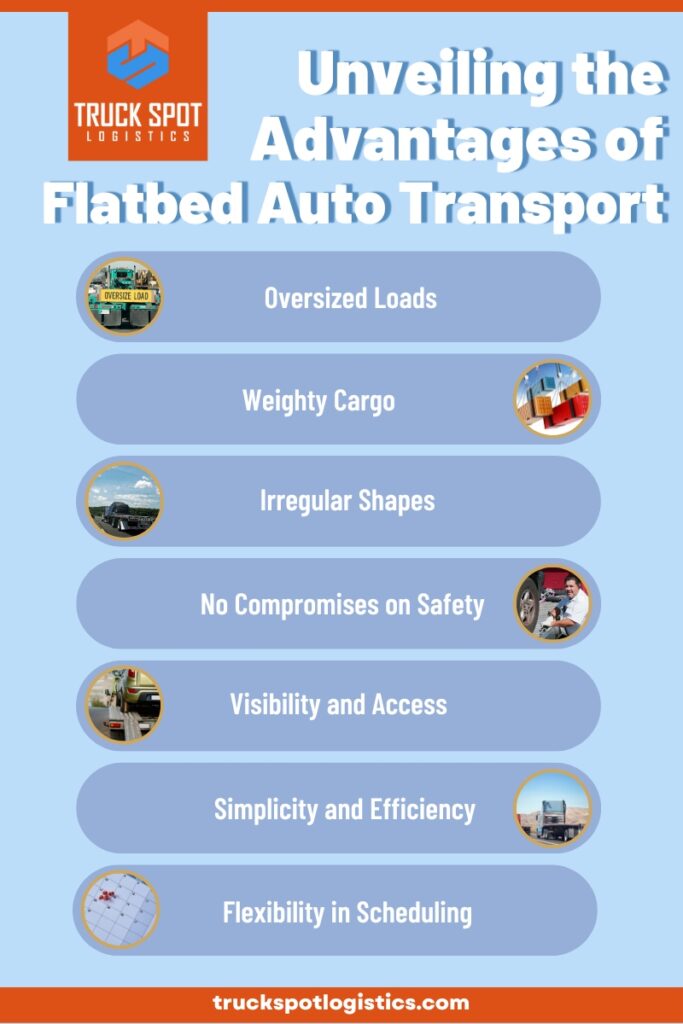
When you’re sizing up how to ship your special set of wheels, remember that flatbed car transportation services are like the special forces of auto transport—there when you need them for the tough jobs. And when it comes time to make a decision, TruckSpot Logistics can help you compare and contrast options, ensuring you find a service that’s as reliable and hardworking as the trailer your vehicle will travel on.
Specific Use Cases for Flatbed Shipping
Flatbed shipping isn’t just a method; it’s the Swiss Army knife of the auto transport world. It’s the go-to solution when traditional transport methods fall short. Let’s dive into some specific scenarios where flatbed auto transport isn’t just convenient, it’s essential.
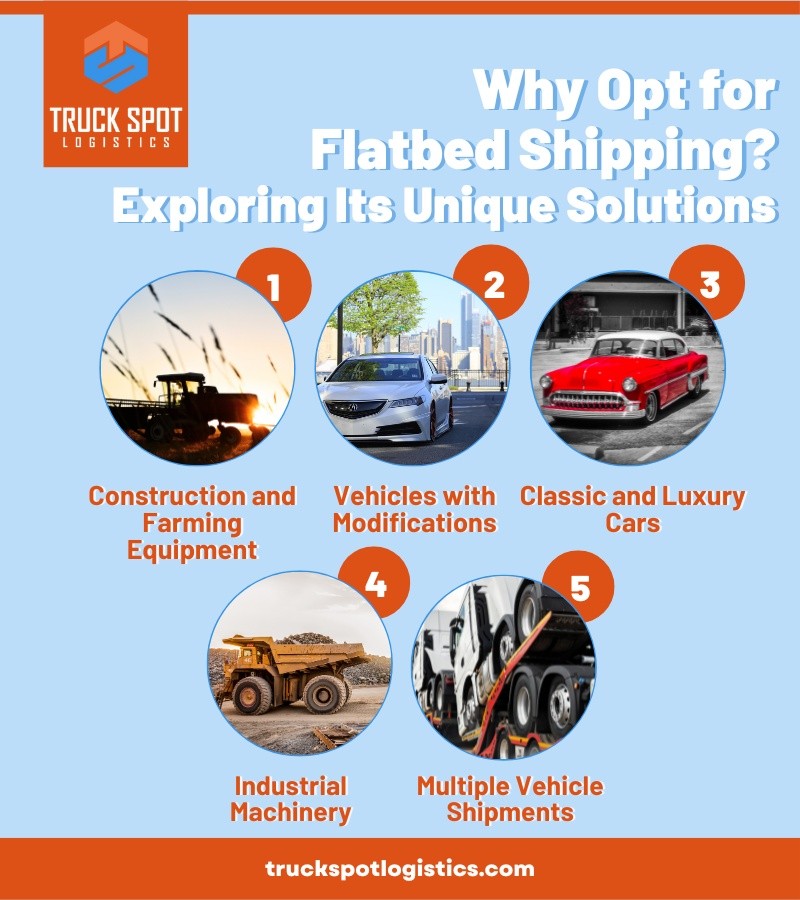
Each of these use cases highlights the adaptability and capacity of flatbed car transportation services, ensuring that no matter the cargo, there’s a shipping solution that fits.
Understanding Flatbed Shipping Costs
When it comes to flatbed vehicle shipping, understanding the costs involved is crucial for successfully planning and executing a transport project. In this section, we will discuss the factors that contribute to flatbed shipping costs and how to navigate these expenses with accuracy.
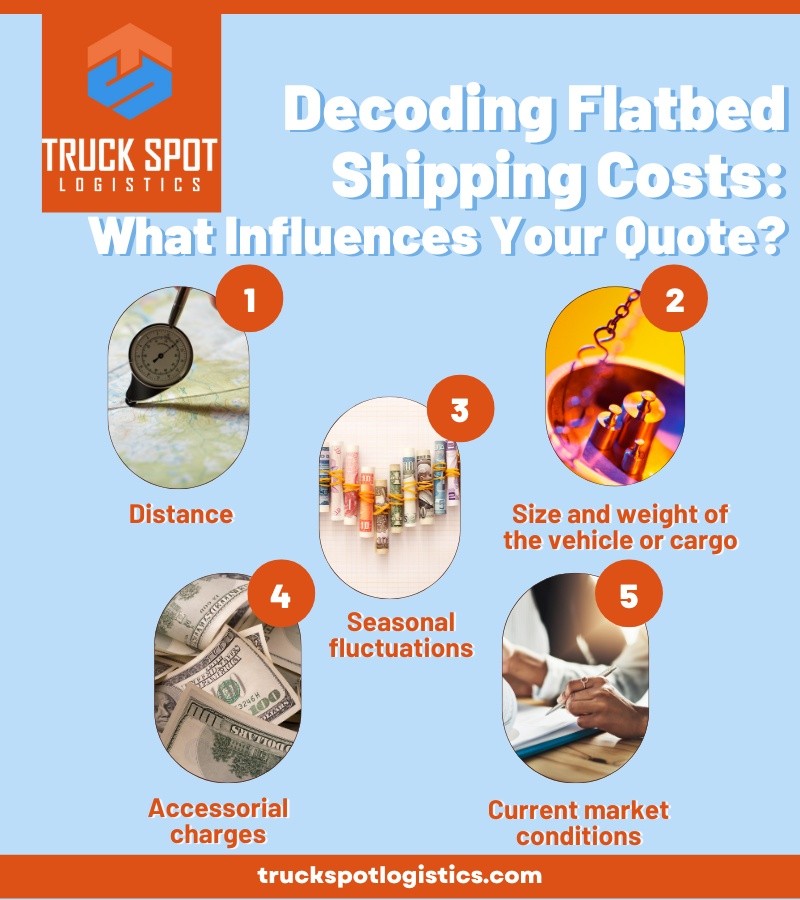
One of the primary factors affecting flatbed shipping rates is the distance that needs to be covered. Naturally, longer distances will result in higher fees due to more fuel consumption, increased wear and tear, and potential tolls.
Another key aspect to consider is the size and weight of the vehicle or cargo being shipped. Larger, heavier loads may require special equipment, permits, or additional labor, leading to increased expenses.
It’s also important to consider seasonal fluctuations in the shipping industry when determining costs. For example, during peak seasons, higher demand may drive rates up, while the opposite can happen during slower seasons. This can be seen in the national average flatbed trucking rates fluctuating over time with spot rates and contract rates reflecting market conditions.
In addition to the aforementioned factors, accessorial charges may apply in certain situations. These charges may include tarping fees, layover fees, detention charges, or other incidentals. We always recommend discussing these potential charges with your chosen shipping company to ensure a clear understanding of the total cost.
Lastly, the current market conditions play a significant role in determining shipping costs. For example, the Wicker Park Logistics article mentions that economic conditions in the U.S. freight market make it very challenging for carriers. As a result, average spot rates for reefers and dry vans have fluctuated over time.
When it comes to flatbed vehicle shipping costs, understanding the main contributing factors and keeping an eye on market conditions are essential for effective planning and budgeting. By staying informed and working with a reputable shipping company, we can successfully navigate the various costs associated with flatbed shipping and transport our cargo efficiently and economically.
Challenges and Solutions in Flatbed Transport
As we approach 2024, flatbed vehicle shipping faces a unique set of challenges, as well as opportunities for growth and improvement. In this section, we’ll discuss some of the key issues facing the industry and the solutions being implemented to address them.
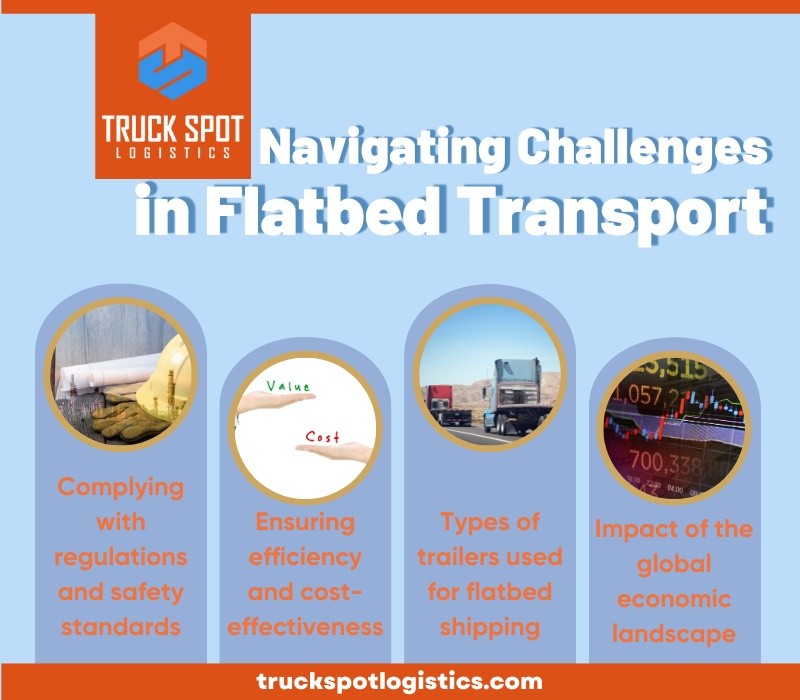
One major challenge in flatbed auto transport is complying with regulations and safety standards. Ensuring that cargo is properly secured and adhering to weight limits are crucial for preventing accidents and maintaining road safety. The compliance conundrum faced by flatbed carriers can be addressed by investing in comprehensive training programs, implementing robust safety procedures, and staying up to date with regulatory changes.
As the demand for flatbed car transportation services grows, there’s an increased focus on ensuring efficiency and cost-effectiveness. One way to optimize flatbed shipping is by leveraging technological advancements within the industry. For example, advanced GPS systems and fleet-tracking tools can help streamline shipping routes and minimize delays. Incorporating these practical solutions can help reduce flatbed shipping costs, making it more competitive in the market.
Of course, the types of trailers used for flatbed shipping play a significant role in meeting the needs of various clients. There are specialized flatbed shipping trailers to cater to different cargo requirements. For instance, drop-deck trailers are designed for transporting taller items, whereas extendable trailers can accommodate extra-long freight. It’s crucial to select the appropriate trailer type to ensure the safe and efficient handling of cargo.
Another aspect to consider is the impact of the global economic landscape on our industry. There is an expected increase in supply chain disruptions, leading to potential logistical delays in 2024. We can mitigate these issues by building resilience in our operations through diversification of suppliers, investing in inventory management systems, and strong communication within the supply chain.
By addressing these challenges with proven solutions, flatbed auto transport can be a reliable option for those hard-to-ship vehicles. Whether you’re a manufacturer moving machinery or a car enthusiast with a prized possession, understanding the ins and outs of flatbed shipping is key to a successful transport. And remember, official sources such as the Federal Motor Carrier Safety Administration (FMCSA) are invaluable for ensuring your chosen carrier meets all safety and regulatory standards, giving you extra peace of mind.
For those ready to explore their options, TruckSpot Logistics serves as your guide, simplifying the process of comparing flatbed car transportation services. Armed with knowledge and the right resources, you can confidently navigate the complexities of flatbed shipping, ensuring that your oversized treasures arrive at their destination just as they left: in perfect shape and ready for the road ahead.













